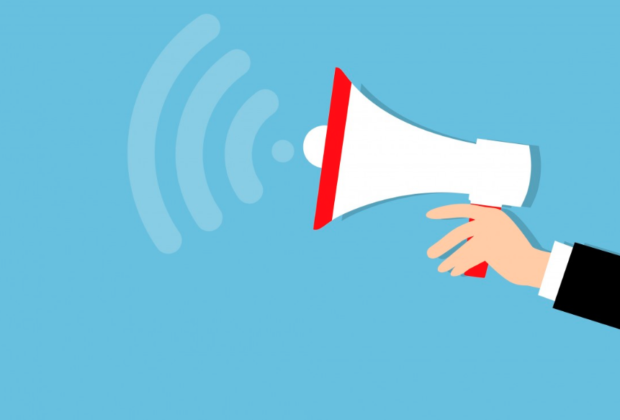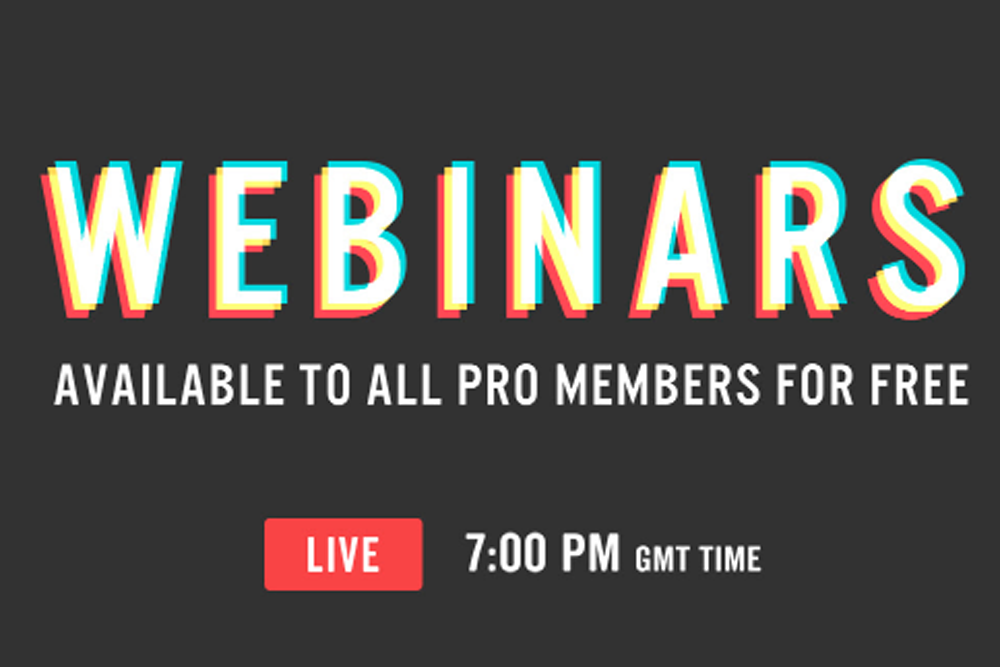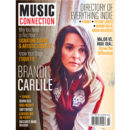Online promotion is the art and science of utilizing the web and its many tools to communicate with your audience and get them to care about you (i.e., recommend you, tell a friend or make a purchase).
While the focus these days has been primarily on streaming playlists on Spotify, note that Spotify playlists are just one part of your complete online promotion plan (and online promotion is just one part of your complete Marketing Plan of Attack™, but that’s another story you can read about in my book).
For now, what follows is a concise reminder of all the other online promotion strategies you should be
employing—together with Spotify playlisting—as one complete integrated promotion campaign. This
includes personal websites, personal blogs, social networks, online publicity, video sharing sites, direct email lists and pod/video-cast shows.
USE A PERSONAL WEBSITE AS AN EFFECTIVE PROMOTIONAL HUB
Many internet experts agree that a personal website is your most important online asset. It’s that special place where you can direct traffic, show off your personal brand, and eventually get customers to purchase merch, concert tickets, production services and any other products you sell.
Selling is crucial. After all, if a business is not making sales, it is just a hobby. That’s why it is so important that your website is easy to find and your content is enticing enough to get people to stick around. This brings us to two important issues: creating content and optimizing your site.
Create Remarkable Content: We’ve all heard the saying, “content is king,” but in the book Optimize, author Lee Olden says “content is the kingdom.”
Make sure your personal website is updated regularly with concise, relevant, unique, entertaining and engaging product and service content that fulfills your target customers’ needs and reminds them why they should care about being your fan.
High quality music, graphics, podcasts, videos, stories, games, contests, fan profiles, tour dates, quizzes, surveys, links to playlists and links to current blog posts that feature your personality can all help to draw new customers to your site and keep them coming back for more.
Just be sure to present all of your content in a way that does not make your website look cluttered, or reduce your site’s loading speed.
For more advice on creating quality content and designing websites, check out these classic books: Content Strategy for the Web by Kristina Holvorson, The Content Code by Mark Schaefer, and Made to Stick by Chip Heath and Dan Heath.
Optimize Your Site: To ensure that your fans find all the marvelous content that you post on your website, you should also dedicate some time to “optimizing your website content.”
Content optimization is more than just posting links to your website (on social networks, blogs, and other relevant websites). It is the process of analyzing your content for opportunities to make your page more attractive to both search engines and the users who will eventually read it.
The very first step is to identify keywords or phrases that people might use to search for your type of business. (“Sound Designer in LA.,” “Local Band in Austin,” etc.). This research can help you shape your site’s content and determine the kinds of questions you may want to answer.
Next, says internet consultant Garret Bever, incorporate your keywords naturally into the body of your content. “This sends signals to search engines telling them what your page is about, and helps the search engines decide who should be first in the list when someone searches for those and similar phrases.”
Finally, says blogger Mike Wood at SEMrush blog, be sure to stay up-to-date on all of the search engines’ policies, because SEO policies are known to change in small but significant ways.
This is just the surface of SEO. If all this stuff sounds foreign to you, then seek recommendations for a web developer, consultant, or service provider who can help. You can also read books like SEO: Search Engine Optimization Bible by Jerri Ledford, and check out sites like Search Engine Watch and Search Engine Land. The information on the topic of SEO is plentiful.
CREATE YOUR OWN PERSONAL BLOG
A blog is a distinctive website that organizes posts in chronological order, gives visitors an opportunity to leave comments and utilizes a format called RSS (Really Simple Syndication) that alerts subscribers of all updates.
The typical indie artist blog includes current text, pictures, videos and self-curated playlists consisting of both the local bands you love and your own music as well. A blog is meant to inform people about who you are, what you do and what you think about a particular topic. It is also a place to build a community of like-minded people, build relationships and eventually drive sales.
Music business consultant Dave Jackson notes, “Fans seem to flock to blogs—especially those that are updated with tales from the road and wild happenings backstage—since they are less static than most personal websites. Better yet, search engines also love blogs, because blogs are seen as “authority sites” where valuable and current info can be found. And the best part about blogs is that all of them are built on a platform that can be maintained easily by a novice web user. Some people even build their entire website on a blog platform and you can too.
To get started with your blog, check out books like Six Figure Bloggers by Sally Miller.
CREATE PROFILES ON SOCIAL NETWORKS TO ATTRACT FANS
Social networks are a place where you can be the real thing, build trust and form solid relationships. They are also a place from which you can patiently direct traffic to your personal website, collect emails for your database and ultimately entice fans to make a purchase. And yes, of course, social networks are also a place where you can share links to your music online and playlists that feature you.
While there are many things social networks can do for you, there’s one thing they cannot offer: a place to PUSH your messages on people and spam them with annoying requests. That’s a big no-no in the social networking community. This is why it is important to have a thought-out social media strategy that balances on engaging fans, driving sales and organizing your time.
Engage Fans: Helen Kim, a social media consultant in Los Angeles, says, “People want to feel heard and noticed on social media. Of course, branding and building your profile is important, but the work does not stop there. Engaging in meaningful interactions with your community comes hand-in-hand if you want to truly cultivate a strong network of followers.”
Consultant Gary V uses a boxing metaphor to describe the ultimate social media strategy: Reach out to fans and engage them over time (or take a few boxing jabs), and then when there’s a relationship, start to pitch them on what it is you offer (or throw that big right hook knock-out).
And finally, on a personal note, I say to make your social media more “social.” Yup, that’s right! Treat online similar to how you would treat offline.
Would you ever walk up to someone with a bag over your head and say, “Hi, my name is Jack_265” and then immediately request that they listen to your music or vote for your band in a recent contest you’ve entered? Of course not! So use an attractive profile picture, use a real user name and start to engage with your fans first.
Organize Your Time: To utilize your time on social networks most effectively, pick the top one or two popular platforms for your target audience and then consider automating them so that you can upload data on multiple platforms from one main site (to help you do this, check out the top social media posting and scheduling tools like Hootsuite, Sprout Social and Loomly).
Also be sure to create a daily/weekly social media agenda for yourself and schedule the frequency with which you will upload content. For instance, Andy Ferreira, who sells guitar courses online, posts motivational quotes on Mondays, gear reviews on Tuesdays, guitar performance videos on Wednesdays and more. Says Andy, “consistency leads to connection.”
Drive Sales: Finally, once you’ve made a connection with your audience, you can start asking them to do things like visit the playlists on which you are featured, “pre-save” or “pre-add” the songs you are soon to be releasing on all of the various digital service providers, and/or vote for you in the songwriting and best-band contests that you’ve entered. You might even start paying for advertising as a way to boost or promote your posts and reach a greater number of paying fans.
Bottom line, the better you attempt to engage with fans, and the more organized you are with your time on social networks, the more likely you will be at driving sales to your website.
GENERATE ONLINE PUBLICITY VIA E-ZINES, BLOGS AND PLAYLISTS
E-zines, blogs and other online media that review independent artists, publish interesting stories and curate playlists are yet another great place to attract attention to your career and eventually make sales.
The folks behind these mediums are typically viewed as authorities (or influencers) and can help build your online credibility. Know that it’s not enough to have an online presence where merely “you” are talking about “you.” Generate publicity by building and pitching a list.
Build a List: Build a list of sites to pursue by conducting a keyword search with terms like “Indie Music Reviews,” “Indie Music Blogs” or “Indie Music Playlists.” You can also investigate where your competition is generating publicity and pursue these very same options. Additionally, you can check out The Indie Bible for an “approved list of contacts.” According to the author, these contacts are more than willing to review and even playlist your content. For starters, check out ArtistFirst, M3 Radio, Rockwired Live, Amazing Radio and Radio Crystal Blue.
Pitch your List: Once you’ve compiled a list of online media outlets, familiarize yourself with the editors’ or curators’ names, the tone and style of the sites and the submission policies. You may be required to email a link to your website where your band’s unique narrative, attractive pictures and amazing music can be found, or you might have to email similar information in an electronic press kit (EPK), which lays out your information attractively in the body of the email.
When pitching, always be pleasantly patient and tactfully persistent. Bloggers receive hundreds of submissions weekly. Sure, there are paid services that will submit for you, but with really unique products/services and an indomitable spirit, you will eventually get what you want.
POST CONTENT ON VIDEO SHARING SITES
Creating and posting video content on personal websites, social networks and video sharing sites is another great way to attract attention, stimulate interest, and eventually make sales.
These days, shooting and editing video content has never been easier. To illustrate, independent artist David Hull used a Sony Handycam and a lavaliere microphone to record a quality clip of him playing a Bach piece on his bass guitar. He got 500,000 streams in just a few days. Pretty cool!
But rather than just pre-recording and posting live performance videos, there are numerous video scripts that you can employ, including lifestyle, fan-generated and live-streamed videos.
Produce Lifestyle Videos: Create videos that depict the lifestyles of your fans and set your music as the soundtrack. If you’re an alternative, punk or metal band from California, you might create a video with rad skateboard footage of kids riding in the parks of Venice Beach, kids jumping the stairs at Hollywood High School, or kids cruising down the Hollywood Walk of Fame at night—all set to your songs. The band Herrera My Way did this and received 130,000 hits.
Make Fan-generated Videos: Initiate a contest for the “best dance” video or “best lip-sync” video for one of your singles (think Tik-Tok videos, but not necessarily on that platform).
The Russian band Little Big initiated a dance contest where it asked its fans to create and share videos dancing to their song “Skibidi.” Not only did this generate loads of word-of-mouth promotion for the band, it earned 371,536,226 YouTube views and 16,474,318 Spotify spins.
Live Stream Videos: Finally, deliver your videos in “real-time.” This creates a more exciting and engaging experience that can eventually lead to more streams of your songs and to more sales from your website. And the best part of live streaming is that it can be delivered from the comfort and safety of your own home.
Back when the Coronavirus was first classified as a pandemic and people were asked to stay away from crowds, many artists’ shows were canceled and their plans to promote their singles were thus minimized. But this didn’t stop pianist Susan Erwin. She announced a series of streamed concerts via her live feed on Facebook. Erwin joked that the fans can now watch her shows “Corona Free” (unless, of course, they wanted to drink a Corona).
The examples of video scripts are numerous. There are also lyric videos (check out Hypo Campus and the song “Monsoon”), live staged videos (check out Dahlia and the song “Gravity”) and 360 videos (check out Muse and the song “Revolt”).
According to manager Sydney Alston, the cool thing about having a number of different approaches to music videos, is that you can use it to stretch out the promotion for the release of your singles. You can release your single on week one, a lyric video of the song on week two, the live performance video on week three, and an acoustic version on week four. Then repeat. This keeps your audience furnished with content and keeps them engaged.
To start posting your own videos online, there is YouTube, Vimeo and DailyMotion.
BUILD, CREATE, AND SERVICE DIRECT EMAIL LISTS
While you may already be overwhelmed with the number of internet strategies available to you, don’t forget email marketing. Stanford University professor, Monica Lam, says, “Email marketing is still a simple, direct and effective method of getting your promotional message out to your public and triggering a customer response.” But you have to build, compose and service your email lists well.
Build Email Lists: When building your email list, put quality before quantity. Always ask people if they really want to be on your list and receive information. For those who agree, have them email you (this way you can easily log their data and eliminate input errors). And don’t forget to offer an incentive in exchange for their email, such as a free download or just a big ol’ hug.
Compose Effective Emails: To stand out from other emails and get your target customers’ attention, be sure to create personalized, catchy and complete subject lines, such as: HI BOBBY/After-Party with FREE Booze/MAY 1/COMING?”
In the body of your email, provide more detailed information with links or buttons that prompt your fans to take action, visit your site, make a purchase or stream your single on Spotify. You might even consider creating a brief and regular newsletter that offers interesting music trivia, the best local events around your town and, of course, updates about that new playlist you’re on.
Service Your Emails: Last, when servicing your email lists, consider using one of many services like Constant Contact, MailChimp or MyNewsLetterBuilder. These companies allow you to personalize your email messages, isolate territories, increase deliverability, remove dead emails, manage “unsubscribe” lists and measure your success. Some of these services are free for up to about 2,000 email addresses, and others are fee-based depending on the size of your email list.
USE AUDIO/AUDIO-VIDEO PODCASTS TO GET EXPOSURE
And last but not least, audio podcasts and audio-video podcasts are short shows that listeners/viewers can play on their personal computers or mobile phones while they are on the go (at the gym, on the train, or wherever).
Audiocasts or videocasts can cover a variety of topics from politics, sports, make-up, finance, religion and so much more.
So what do these diverse shows have to do with your musical career? Well, remember that your fans are not one-dimensional—they don’t just sit around listening to music all day long. They also have other activities, interests and opinions (called psychographics) that you can target in a less pushy and indirect manner.
Kane Acosta, the singer-songwriter of the band Ashes to Amber and a student of my DIY music marketing class at USC Thornton School of Music, used “video-casts” largely to his advantage.
Kane reached out to numerous make-up vloggers who were getting millions of views, he convinced them to use his music in their shows and he had them provide a link back to his Spotify channel. The results: Kane just reached a very impressive one million streams! Bravo Kane!
But what is especially relevant to note here is that Kane did not put all his time and energy into just one promotional method.
Kane utilized videocasts, posted a variety of entertaining videos on his YouTube channel, generated online publicity via interviews in the Morning Brew and Daily Trojan, utilized social media like Bandsintown and Instagram, updated his personal website (at ashestoambermusic.com) and played shows consistently all over Los Angeles.
Kane did not just put all his eggs in the Spotify basket; he employed a number of online promotion strategies—together with Spotify playlisting—as one complete integrated campaign.
BOBBY BORG is the author of Music Marketing for The DIY Musician and Business Basics For Musicians, both in their Second Editions (2020). This article was excerpted from Borg’s marketing book with the permission of Ronan & Littlefield. You can purchase Bobby Borg’s books and also sign up for his weekly free blog “Borg’s Blog” by visiting bobbyborg.com.












